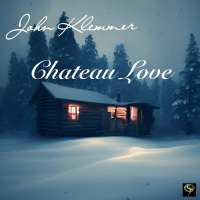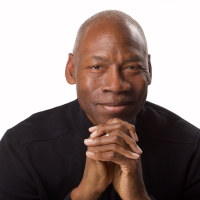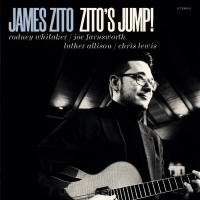Home » Jazz Musicians » Harvey Mason
Harvey Mason
You will have only begun to scratch the surface by identifying the masterful Harvey Mason as just a drummer. Yes, his precision time keeping and versatility have placed him among THE most in-demand and most recorded session drummers of all-time. Yes, his tumbling tom-tom fills and the lickity slick synchronization between his hi-hat cymbals, snare and bass drums are instantly recognizable signatures. Yes, he’s been hired by everyone from Barbra Streisand to James Brown to Henry Mancini to Herbie Hancock to Reba McIntyre to Sergio Mendes to the London Symphony Orchestra. Yes, he has played on well over 1,000 recordings and hundreds of film scores, won four 1st place plaques from Modern Drummer magazine's annual studio poll and has been the first call drummer for the Academy Awards ceremonies on 16 occasions.
However, Harvey Mason is a seasoned and scholarly all-around musician for whom drums were an entry point into vast forums of musical expression.
As a composer, he has written songs recorded by artists ranging from Donald Byrd to the Brothers Johnson as well as a television commercial for Mattell Toys’ Shanti doll. He also composed a percussion piece for Quincy Jones’ The Color Purple score.
As a producer, he introduced the world to the Hawaii-based Christian jazz septet Seawind, which inadvertently brought one of the most in-demand horn arrangers (Jerry Hey) and horn sections (the Seawind horns) to Los Angeles and promptly introduced them to Quincy Jones as tightess and most creative horn section he’d ever heard. (Quincy obviously agreed) He also produced the debut album by Midnight Star (The Beginning), inaugurating what would become one of the ‘80s most influential techno-funk groups, Lee Ritenour’s largest selling hit, "Is it You" and Dionne Warwick (Fragile).
As a founding member of the contemporary jazz "super group" Fourplay, Mason flexes his writing, playing and arranging skills with partners Bob James, Nathan East and Larry Carlton (the latter of whom replaced original member Lee Ritenour). Fourplay’s debut album sat atop Billboard’s Contemporary Jazz chart for thirty-four weeks, leading to a platinum album, three subsequent gold discs, a Soul Train Music Award and three Grammy nominations, to date.
For his work, Mason earned Drummer of the Year honors for the first two years running of the brand new Smooth Jazz Awards.
Finally, his beats have been sampled by many acts, most notably hip hop martyr The Notorious B.I.G.
Indeed, Harvey Mason’s contributions to music stretch into more directions than even those who know much about him can imagine.
Read moreTags
Chris Standring: Wonderful World

by Richard J Salvucci
Many years ago, there was a radio station, WJBR, broadcasting from Wilmington, Delaware. The call sign stood for Just Beautiful Radio and that was precisely what you got. No-one called it easy listening or anything like that--it was the early 1960s--but listeners got a predictable dose of Percy Faith, Ray Conniff, Frank Chacksfield, nothing too challenging. The announcers had a predictable style as well—modulated, mellow, reassuring. In those days, with the possibility of nuclear war never far from anyone's mind, ...
Continue ReadingChris Standring: Wonderful World

by Pierre Giroux
Chris Standring is a Los Angeles-based contemporary jazz guitarist who was originally raised in Buckinghamshire, England. He has always had an itch to record an album of standards and that was scratched with the release of Wonderful World . Through the marvels of technology, Standring was able to record the trio tracks in several locations in California with some bold face names such as Peter Erskine, Chuck Berghofer and Randy Brecker, while the orchestral input was arranged and conducted by ...
Continue ReadingChris Standring: Wonderful World

by Jack Bowers
Wonderful World, the fourteenth album as leader by British guitarist Chris Standring, was no doubt recorded with the best of intentions. And make no mistake, the music is warm and lovely, furnishing an opulent showcase for Standring's mellow guitar. Aside from that, however, there's not a whole lot to say. Standring's “orchestra" consists of a nineteen-member string section, while Geoff Gascoyne's syrupy arrangements call to mind popular string-laden sessions from the 1950s and '60s, “easy listening" albums for “late-night lovers" ...
Continue ReadingHarvey Mason: Chameleon

by Jeff Winbush
When you've been making music as long as Harvey Mason has as a solo artist and manning the drum chair for Herbie Hancock, George Benson, Donald Byrd,and more artists than there is space here to list, you are not only pleasing longtime fans, you're making new converts as well. Some who might ask, “This guy's pretty good. Wonder what else he's done?" Mason's answer is his first album in a decade, Chameleon and he both looks back at ...
Continue ReadingThe Complete Arista Albums Collection

by John Kelman
When fusion first emerged in the late 1960s/early '70s with artists like trumpeter Miles Davis, pianist Chick Corea and guitarist John McLaughlin, the emphasis was on guitar and keyboard heavy lineups like Return to Forever and Mahavishnu Orchestra, with an equally strong predilection for the intensity and volume of rock and a kind of thundering funk that was different than the kind of music coming from R&B and soul artists like Stevie Wonder and Earth, Wind & Fire. Parallel to ...
Continue ReadingHarvey Mason: With All My Heart

by Javier AQ Ortiz
Harvey Mason's motto on With All My Heart seems to be “The one who plays drums in a jazz trio with the most bad-ass pianists and bassists wins. Arguably, that can be also stated of his entire career, as he has played and recorded with a mind-numbing amount of artists through various historical periods and musical styles. The lengthy and illustrious development of the quintessential small jazz group is definitely boosted by this recording.The premise of the production ...
Continue ReadingHarvey Mason: With All My Heart

by AAJ Staff
Harvey Mason With All My Heart RCA 2004
Straight-ahead jazz fans and the more “purist" minded of jazz listeners among us have a tendency to write off the overall musical abilities of those who play contemporary or smooth jazz. This often boils down to little more than guilt by association, as one will make an assumption about the musical talent of someone who performs music they don't really respect. Just because of ...
Continue ReadingJulio Iglesias, Doug Morris, Harvey Mason, Dee Dee Bridgewater To Receive Honorary Degrees At Berklee Commencement May 9

Source:
Berklee Media Relations
Berklee College of Music president Roger H. Brown will present Julio Iglesias, Doug Morris, Harvey Mason, and Dee Dee Bridgewater with honorary doctor of music degrees at Berklee's commencement ceremony, Saturday, May 9, at the 7,000-seat Agganis Arena at Boston University. More than 900 Berklee graduates, their parents, and invited guests will be in attendance. This year's honorary doctorate recipients are being recognized for their achievements and influences in music, and for their enduring contributions to American and international culture. ...
read more
Guitarist Chuck Loeb Releases "Plain 'N' Simple", B-3 Organ Combo Date w/Harvey Mason, Pat Bianchi, on Tweety Records

Source:
Michael Bloom Media Relations
Long before Chuck Loeb embarked on his remarkably diverse career that has included being Stan Getz's musical director, holding the guitar chair in the 80s fusion ensemble Steps Ahead and, most recently, joining supergroup Fourplay, he was a kid growing up outside New York City, fascinated by the classic jazz organ trio sounds of his childhood. Capping a two decade-plus discography of popular and often groundbreaking contemporary jazz recordings, Loeb fulfills a lifelong dream with the release of Plain 'n' ...
read more
Jazz Backstage: Harvey Mason (Early Years)

Source:
Jazz Online By Joseph Vella
Legendary drummer Harvey Mason returns to Jazz Online's Jazz Backstage podcast and this time he's reflecting on his early studio days and working with producers Larry and Fonce Mizell. During his tenure working with the Mizells, Harvey recorded countless sessions working with everyone from Donald Byrd to Johnny Hammond to Bobbi Humphrey. Many of those recordings which had decent commercial success included Harvey's soulful drumming and are among the most sampled works in hip-hop. Listen as Harvey takes us on ...
read more
Jazz Backstage: Harvey Mason (Mulligan/Baker)

Source:
Jazz Online By Joseph Vella
Drummer Harvey Mason has contributed to a good number of major jazz recordings with Herbie Hancock, Freddie Hubbard, George Benson, Lee Ritenour, Donald Byrd, Bob James and many more. His ability to swing hard as well as lay down a funky beat are signatures of his playing but he is also well known for his precision time keeping, tasty riffs, warmly tuned drums and dynamic cymbal work. Harvey is a living legend and one of the greatest drummers of all-time ...
read more























_with_Skip_Mcdonald_(Right)_23_n.jpg)
















